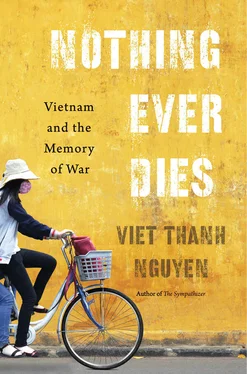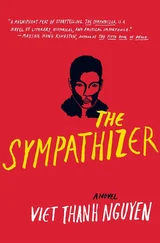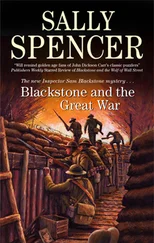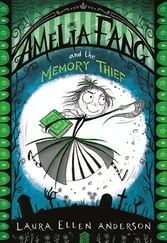Being only human, celebrities and actors die, but being inhuman, the military-industrial complex lives on. Two examples suffice to show this, one dumb, one smart. First, the dummy: Air America , released in 1990, a cinematic crime about two wild and crazy pilots for the CIA’s drug- and gun-smuggling airline, used to supply the Hmong army in Laos. Playing the loveable rogues are a handsome Mel Gibson and a young Robert Downey Jr. The airplane and the airline are the industrial symbols of America, and in the end, Air America — both airline and film — saves the Hmong rather than exploits them. The airplane is used not to smuggle guns and make illicit profits but to rescue Hmong refugees from the Pathet Lao forces attacking their mountaintop base. As explosions and gunfire abound, Gibson and Downey argue over whether to abandon their cargo of contraband weaponry in order to make room for the Hmong. These Hmong say nothing, a crowd in the backdrop standing silent as bullets whiz by and their would-be saviors wrestle with their moral dilemma. In reality, the CIA air-rescued a few hundred of their Hmong allies from their Long Chieng mountain base in the waning days of the war and left thousands more behind. The gap between history and Hollywood is so vast it is hardly necessary to belabor the point that Air America is naked propaganda clothed as entertainment, a silly atrocity about how Americans are neither quiet nor ugly but instead decent and good, as well as good-looking.
Now the smart example: Gran Torino , a movie about the Hmong that retouches history expertly. This movie also adapts the mechanical motif of Air America , named as it is after an American muscle car and set in declining Detroit, aka Motor City, heart and soul of a waning industrial-era America. The legendary Clint Eastwood plays Walt, a gruff, terminally ill Korean War veteran unloved by his own family whose life changes after a Hmong family moves in next door. When the Hmong son tries to steal Walt’s Gran Torino with his gangster friends, Walt catches him and whips him into manly shape, in the process befriending the Hmong family. The boy forsakes his Hmong gang, the gangsters rape his sister as punishment, and Walt takes revenge by going to their lair and provoking them into shooting him dead. The movie enacts the basic ur-myth of European (and American) colonialism, as well as the foundational story of Hollywood, the legend of the white male savior. As the critic Gayatri Spivak put it, this is the tried-and-true epic of the white man saving the brown woman from the brown man (although black or yellow can be substitute colors). But Gran Torino twists this epic, for the savior becomes a sacrificial figure. The old white man gives up his own life, but his fate is an example of what Yen Le Espiritu calls the “we win even when we lose” syndrome that characterizes American memory of the war. 34Walt was already going to die, but now he dies quickly and heroically, bullet-riddled, on his back, his arms spread in crucifixion pose. When a Hmong American policeman arrives to restore order and arrest the gangsters, the moral and geopolitical allegories are clear: America has sacrificed itself to the bad Asians so that good Asians can live and prosper.
More artful than Air America , more sympathetic to the Hmong by granting them speaking roles, Gran Torino is also the more dangerous film. A low-budget movie that became Eastwood’s biggest box-office success before his mega-hit American Sniper , it is a small-tonnage smart bomb that hits its target. Air America is a big-tonnage dumb bomb that only throws up dust and thunder, leaving the enemy intact, a movie so bad it seems like a parody of a Hollywood blockbuster. In contrast, Gran Torino wins the hearts and minds of audiences and critics by allowing the natives to participate in their own subjugation, versus simply turning them into human props, as Air America does. Gran Torino illustrates the notion of writers Frank Chin and Jeffery Paul Chan that (white) America reserves “racist hate” for uppity blacks and “racist love” for docile Asians. 35Racist love is what Walt practices, following in a long tradition that includes Kurtz, the king of the natives, as well as his comic relief descendants in Air America . Flinging insults at people of every ethnicity, Walt performs a supposedly endearing and entertaining xenophobia. Walt may be a racist, but he is an honest and paternal racist who loves his little friends so much he will die for them.
Walt embodies (white) America at home and abroad, or at least the way (white) America sees itself after the civil rights era. In this age, (white) Americans may or may not admit their racism, but they will insist that they defend the little guy, especially the poor and tired one from abroad. So it is that Walt wills his beloved Gran Torino not to his inattentive children and spoiled grandchildren but to the Hmong boy whom Walt has taught to be a man. This paternalistic American father figure who saves the Southeast Asian child is a staple of American industrial memory. An early example is Samuel Fuller’s film China Gate (1957), which opens with a hungry Vietnamese man threatening the puppy of a Vietnamese boy. The boy eventually finds protection with an American serving in the French Foreign Legion, and the film’s final frame shows the American walking off with the boy he has saved. John Wayne’s The Green Berets (1968) echoes this ending when the Duke puts a green beret on a little Vietnamese boy. When the boy asks him what will happen to him, now that the soldier who has worn that beret, his adoptive father figure, has been killed, the Duke tells him, “You let me worry about it, Green Beret. You’re what this is all about.” John F. Kennedy foreshadowed this Hollywood sentimentalism in 1956:
If we are not the parents of little Vietnam, then surely we are the godparents. We presided at its birth, we gave assistance to its life, we have helped to shape its future.… This is our offspring — we cannot abandon it, we cannot ignore its needs. And if it falls victim to any of the perils that threaten its existence — communism, political anarchy, poverty and the rest — then the United States, with some justification, will be held responsible, and our prestige in Asia will sink to a new low. 36
Like the Vietnamese boy wearing his dead father figure’s green beret, the Hmong boy in Gran Torino has been gifted with his dead father figure’s most important symbolic possession. Clearly now his father figure’s son, the boy drives into the Detroit sunset at the wheel of the Gran Torino, the most anomalous and unbelievable image of all, for any self-respecting young Asian American man would much rather drive a Japanese car, preferably with deeply tinted windows, expensive rims, and customized stereos. Likewise, in the unbelievable ending of The Green Berets , John Wayne and his charge walk into the sunset off the coast of Vietnam, even though the coast of the country faces east.
That distortion of reality was a laughable mistake, but the setting of Gran Torino is a deliberate distortion built into the movie’s design, its purpose to advance the American industry of memory. While most of the Hmong refugees ended up in rural California and Wisconsin, in Gran Torino they arrive in Detroit, a city nearly dead from a heart attack induced by Japanese competition. This setting allows Gran Torino to sketch an outline of history that covers half a century of American involvement in Asia, beginning with Walt’s war experience in Korea, continuing through the allegory of the automobile to allude to Japan (whose industry was rebuilt from American bombing with American aid), and gesturing to Southeast Asia with the Hmong. 37The movie is not really about the Hmong neighbors, for any Asian in need of help would have sufficed. Because of the historical timeline of their devastation, the Hmong were simply good candidates for rescue by the white man. This story of rescue erases American racism and violence by foregrounding Asian violence and American self-sacrifice, a tall tale told as a movie, a product America has perfected in its spectacular form. No kind of exportable entertainment is bigger and more expensive than an American movie, just as nothing is bigger than an American supercarrier or more expensive than an American fighter jet. The pure sex of hard machinery and high technology are part of the sexiness of superpowers and their memories. Small countries are sexy too, but in predictably exploitable and degrading ways, offering to the more powerful the thrill of employing cheap labor and buying cheap goods, including cheap prostitutes, the “little brown fucking machines” admired so much by Western men that they invented an appellation for them. These machines may be desirable and alluring, but they are no match for a war machine.
Читать дальше












